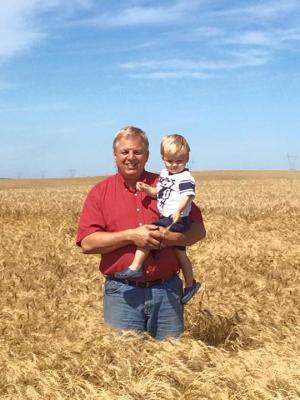Best Case Wetland Mitigation Scenario Seen in Stutsman County Project
A project in Stutsman County represents a “best case scenario” in wetland mitigation, says Stephen Stensgard, USDA National Resources Conservation Service Wetland Mitigation Specialist in North Dakota.
Loretta Sorensen writes from Yankton, S.D.

Wetland mitigation is a program in the Farm Bill that – in general terms -- allows wetlands to be moved, provided that new wetlands are the same size and provide the same conservation value as the old ones.
Terry Wanzek, of TMT Farms, Cleveland, N.D., had a 2.8-acre wetland in a key part of a farm field that he thought would be a good candidate for mitigation. Wanzek farms with this bother, son and nephew.
“Every year it slowed us down during planting and fertilizing, and any time we had to maneuver equipment around it,” he says. Crop yields around the wetland were being hurt by the excess water, too.
Simple mitigation
Wanzek went to his NRCS and began working with Stensgard. The plan they came up with a simple plan. In a corner of the same field where the small wetland was located there were five acres that had been drained before the 1985 Farm Bill was passed protecting such wetlands. If TMT Farms plugged the drain and restored that wetland, it would be able drain the 2.8 acres in the middle of the field and then farm the whole field more efficiently. The farm would also get a three-acre wetland credit because they had restored more wetland acres than they had drained.
Wanzek enlisted the services of an attorney with expertise in wetland laws and policies because the mitigation project included a wetland easement agreement.
“I wanted to be certain I understood what I was signing,” Wanzek says. “From a landowner’s perspective, I believe it’s always wise to make use of the expertise of someone who has a thorough knowledge of tiling and water laws. A few dollars spent on preventing an issue is much better than spending a lot of money trying to resolve an issue.”
Working together
The successful mitigation project has Wanzek thinking about what they and NRCS might do together in the future to improve both the productivity of cropland and the conservation value of wetlands on their farm.

